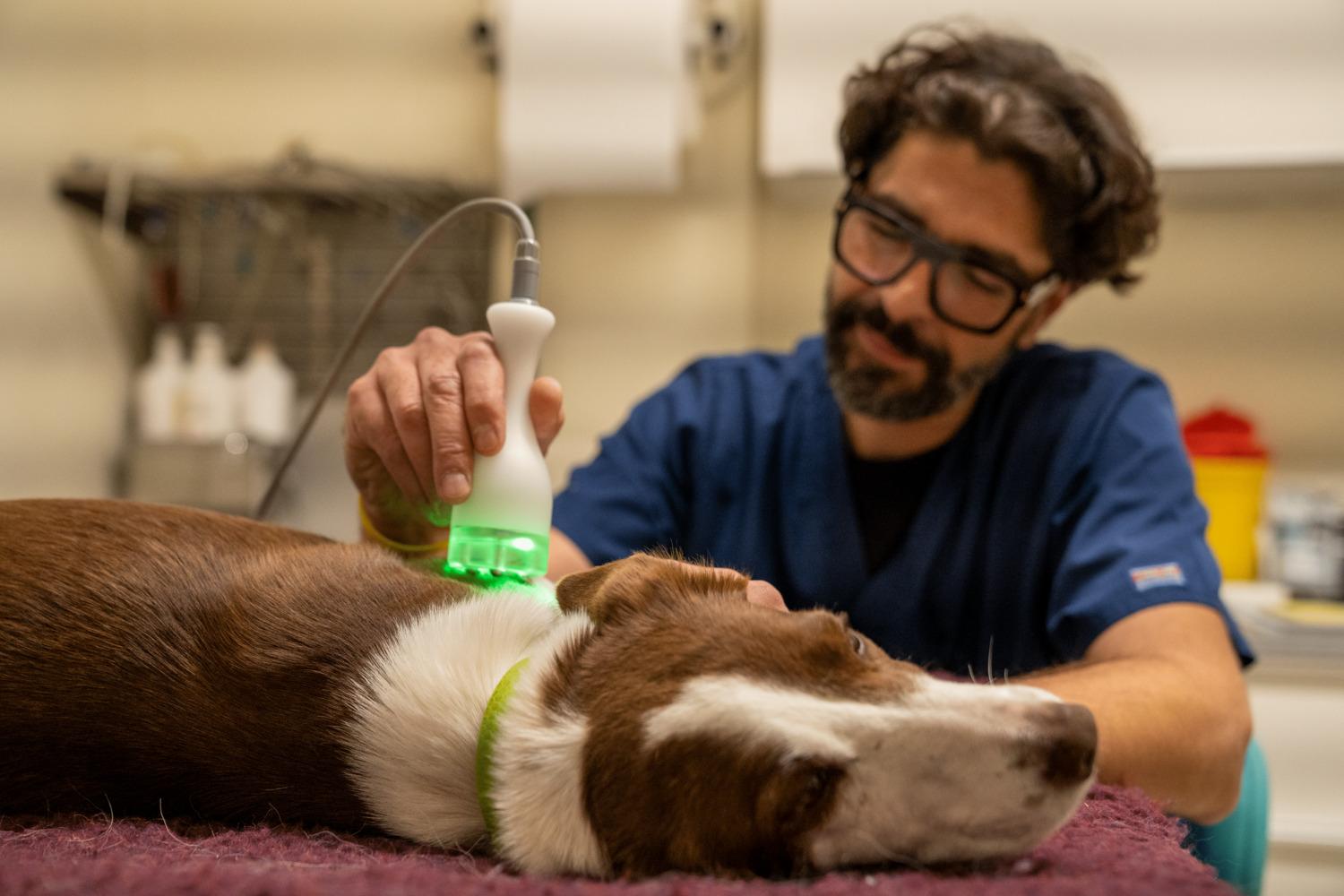By Patrizia Cherici
The veterinary clinic Il Borgo was founded in February 2004 by Dr. Plinio Lidano and Dr. Cristiana Capucci: together since university and lovers of dogs and cats since childhood, they crown their dream by opening this facility that is dedicated to the care of our four-legged friends. “The great empathy towards animals and their owners, as well as continuous training aimed at acquiring new diagnostic and therapeutic strategies that can be offered to patients – says the Dott.re Lidano – are the principles that must exist at the basis of the medical-veterinary approach. Those who come to our clinic can count on the advice of a highly specialized and constantly updated medical staff, to whom they can entrust the health and well-being of their pet with serenity.
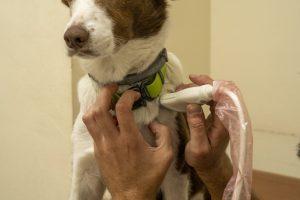
“The passion for dogs – says the dott.re Lidano – was born from my love for sport: since I was a child I have always played basketball and even during the university period, or during post-graduate internships, sport has accompanied me and helped me to enter new cities where I moved for work or training purposes. So, once the clinic opened, in addition to basic medicine, I developed my interest in specialist disciplines, getting in touch with a colleague who did orthopaedics and neurology; then in 2010 I decided to start playing sports with my first dog Frodo, a foundling abandoned in a ditch together with his siblings immediately after birth, the first mascot of the veterinary clinic Il Borgo. I started attending a training centre in Arezzo and in a short time I entered the world of dogs, that is, the world of sport with dogs, immediately fascinating me and specializing in ‘agility dog’, a sport that creates a combination and a real intimate understanding with your dog. After a while, my first Border Collie, Gandalf, arrived in our family, and together with him I had the opportunity to meet guys from the Italian national team with whom I did training and internships: so a new specialized world in cynophilia opened up to me, which led me to look for a school that I considered valid from the point of view of my behavioural skills (Cristiana did a master’s degree in ‘behavioural medicine’ and I helped her in the study: it is very interesting to understand what animals want to communicate to us with their particular behaviour)”.
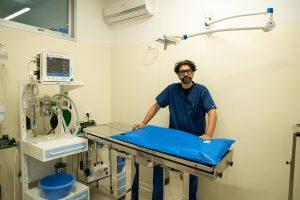
“In my research I found a Finnish school of ‘agility’ of which I was a member for three years and through which I understood what were the innovations in dog training, in the creation of the exclusive relationship with the dog and in teaching him the necessary skills not to enter into conflict (i.e. asking him to do a certain thing without having been well prepared to perform it). After a couple of years of training with Gandalf, he began to have physical problems: even though I turned to orthopaedic and neurological colleagues and despite the in-depth tests that had given negative results, I could not have an explanation of what was happening. So I started my alternative research on the internet and landed in the United States where I found Dr. Maria Christine Zink – who at the time was president of the Society of Dog Sports Medicine, a discipline that did not yet exist in Europe,” he continues.
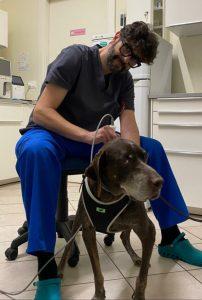 Thus: “I downloaded his books, followed his blogs and a new world opened up to me; As a veterinarian, I used to visit dogs as ‘pets’, i.e. as pet dogs and cats, but in reality the ‘sports patient’ needs something more specific: for example, the physiotherapists or physiatrists of a national basketball team, can rarely find themselves in front of a joint dislocation or a fracture, but the most frequent problems can certainly concern the soft tissues (muscles, tendons, ligaments, joint capsules and fascia). And it is precisely the study of fascial structure that I have deepened in recent times: my goal, both in terms of training and as orientation of my work, is to try to support what can be the work of the sports dog both through musculoskeletal ultrasound, an excellent aid for diagnosing latent pathologies that can give a drop in performance, both by monitoring the animal’s progress during rehabilitation and choosing the timing to be able to return to the field to work”.
Thus: “I downloaded his books, followed his blogs and a new world opened up to me; As a veterinarian, I used to visit dogs as ‘pets’, i.e. as pet dogs and cats, but in reality the ‘sports patient’ needs something more specific: for example, the physiotherapists or physiatrists of a national basketball team, can rarely find themselves in front of a joint dislocation or a fracture, but the most frequent problems can certainly concern the soft tissues (muscles, tendons, ligaments, joint capsules and fascia). And it is precisely the study of fascial structure that I have deepened in recent times: my goal, both in terms of training and as orientation of my work, is to try to support what can be the work of the sports dog both through musculoskeletal ultrasound, an excellent aid for diagnosing latent pathologies that can give a drop in performance, both by monitoring the animal’s progress during rehabilitation and choosing the timing to be able to return to the field to work”.
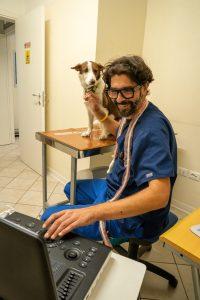 Then he specifies: “Over the years, other collaborations have been born, including the one with a local company that creates equipment for physiotherapy; This allowed me to gain new knowledge about laser therapy, capacitive and resistive diathermy, cryotherapy, thermotherapy, ultrasound and shock waves, all excellent tools for sports patients, but not only. In fact, one of the most frequent pathologies, especially in older dogs, are those affecting the musculoskeletal system, i.e. osteoarthritis: in the United Kingdom this is one of the main causes of euthanasia, especially in large dogs, as it is disabling (numbers close to 20%). Osteoarthritis can be found both in dysplastic growth pathologies that evolve inexorably throughout life, where not correctly diagnosed or where corrective surgery has not been carried out at a certain stage of the dog’s life, or it can be a primary type of osteoarthritis: that is, in dogs, as in elderly people, at a certain time of life a process of loss of muscle mass called ‘sarcopenia’ is triggered which leads to serious joint alterations.”
Then he specifies: “Over the years, other collaborations have been born, including the one with a local company that creates equipment for physiotherapy; This allowed me to gain new knowledge about laser therapy, capacitive and resistive diathermy, cryotherapy, thermotherapy, ultrasound and shock waves, all excellent tools for sports patients, but not only. In fact, one of the most frequent pathologies, especially in older dogs, are those affecting the musculoskeletal system, i.e. osteoarthritis: in the United Kingdom this is one of the main causes of euthanasia, especially in large dogs, as it is disabling (numbers close to 20%). Osteoarthritis can be found both in dysplastic growth pathologies that evolve inexorably throughout life, where not correctly diagnosed or where corrective surgery has not been carried out at a certain stage of the dog’s life, or it can be a primary type of osteoarthritis: that is, in dogs, as in elderly people, at a certain time of life a process of loss of muscle mass called ‘sarcopenia’ is triggered which leads to serious joint alterations.”
“The mission I would like to pursue is precisely to use my training and these skills not only to support the sporting dog, but also to help all elderly dogs that have locomotor problems: in fact, the main symptom that leads dogs to have a more conservative behaviour is osteoarthritic pain: It is a chronic, persistent and maladaptive pain because it is generated by the stimulation of nerve receptors that continuously send messages of discomfort to the dog’s brain, which then gradually limits its movements and playful attitudes (mistakenly interpreted by owners as ‘old age’). In the therapeutic aspect of rehabilitation, infiltrative and regenerative therapy through the use of blood products, such as platelet gel, stem cells, bone marrow concentrates or other derivatives that can be injected into the joints such as, for example, hyaluronic acid (for the management of osteoarthritis) rather than low molecular weight collagen peptides, is therefore very important. The fundamental concept in pharmacological and non-pharmacological pain therapy is the synergy between treatments: if, for example, only diathermy were used, this could cause such habituation within the body that after the tenth session, the dog no longer responds at the receptor level; therefore it will be associated with an infiltrative regenerative therapy rather than with drugs, nutraceuticals and manual therapy: my attention is also focusing on these therapeutic possibilities to be implemented both in traditional veterinary and sports, so use these techniques both in PET for the management of osteoarthritis, and in sports dogs to speed up the healing of soft tissue injuries to return to sports, with the common goal of minimizing the use of anti-inflammatory drugs,” he adds.
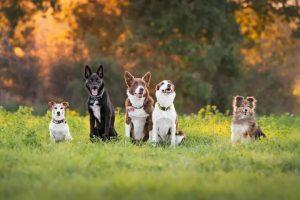 “The future projects I aspire to? First of all, bring dog sports to the Tiber Valley and get to know the area, perhaps by opening a dog centre where you have the opportunity to practice water sports, ‘agility dog’, basic obedience and other sports that are continuously imported from foreign countries: a way to spend time with your dog increasing its level of well-being. Alongside this, as a doctor, I would like to create a real veterinary facility specialized in pain therapy: a centre focused on rehabilitation and physiotherapy that treats the sports dog, but also all the ‘patients’ who live in our families. Therefore, to create a real ‘rehabilitation gym’, a ‘Working Dog Care’, where we can practice manual and instrumental therapies, fitness and advice on the most effective strategies to minimize chronic pain in our patients.”
“The future projects I aspire to? First of all, bring dog sports to the Tiber Valley and get to know the area, perhaps by opening a dog centre where you have the opportunity to practice water sports, ‘agility dog’, basic obedience and other sports that are continuously imported from foreign countries: a way to spend time with your dog increasing its level of well-being. Alongside this, as a doctor, I would like to create a real veterinary facility specialized in pain therapy: a centre focused on rehabilitation and physiotherapy that treats the sports dog, but also all the ‘patients’ who live in our families. Therefore, to create a real ‘rehabilitation gym’, a ‘Working Dog Care’, where we can practice manual and instrumental therapies, fitness and advice on the most effective strategies to minimize chronic pain in our patients.”
“I end with an awareness message addressed to all pet owners: try to promptly distinguish the signs of pain in your dog so that you can adopt both at home and in the gym all the necessary solutions to help your four-legged friend!”
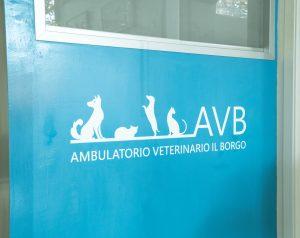
Info: Ambulatorio Veterinario Il Borgo, Via a. Clarke 9, Sansepolcro (Ar)
Tel: 0575 733458
Cell: 339 1209432
Mail: avbvet@gmail.com
